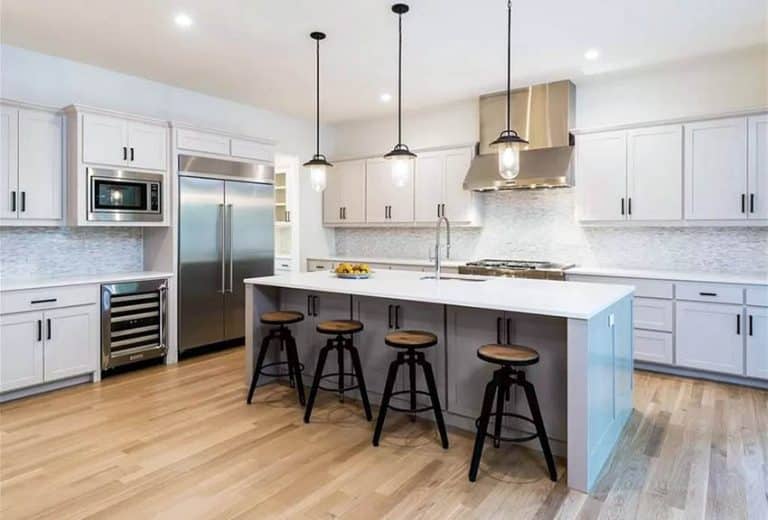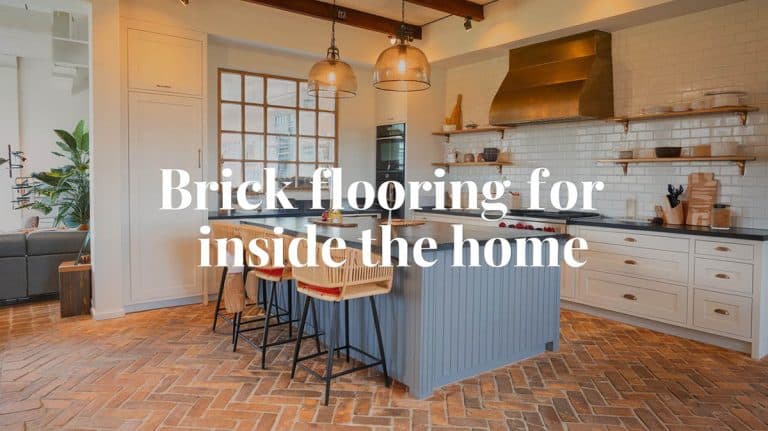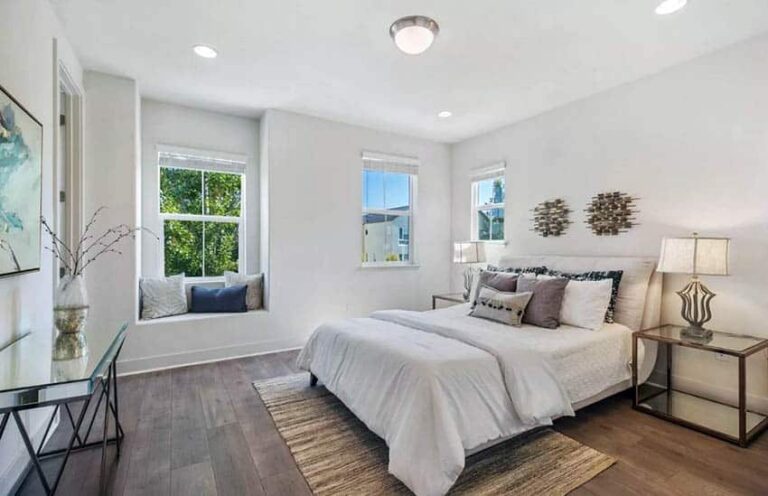10 Creative Playroom Layout Ideas for Different Floor Plans
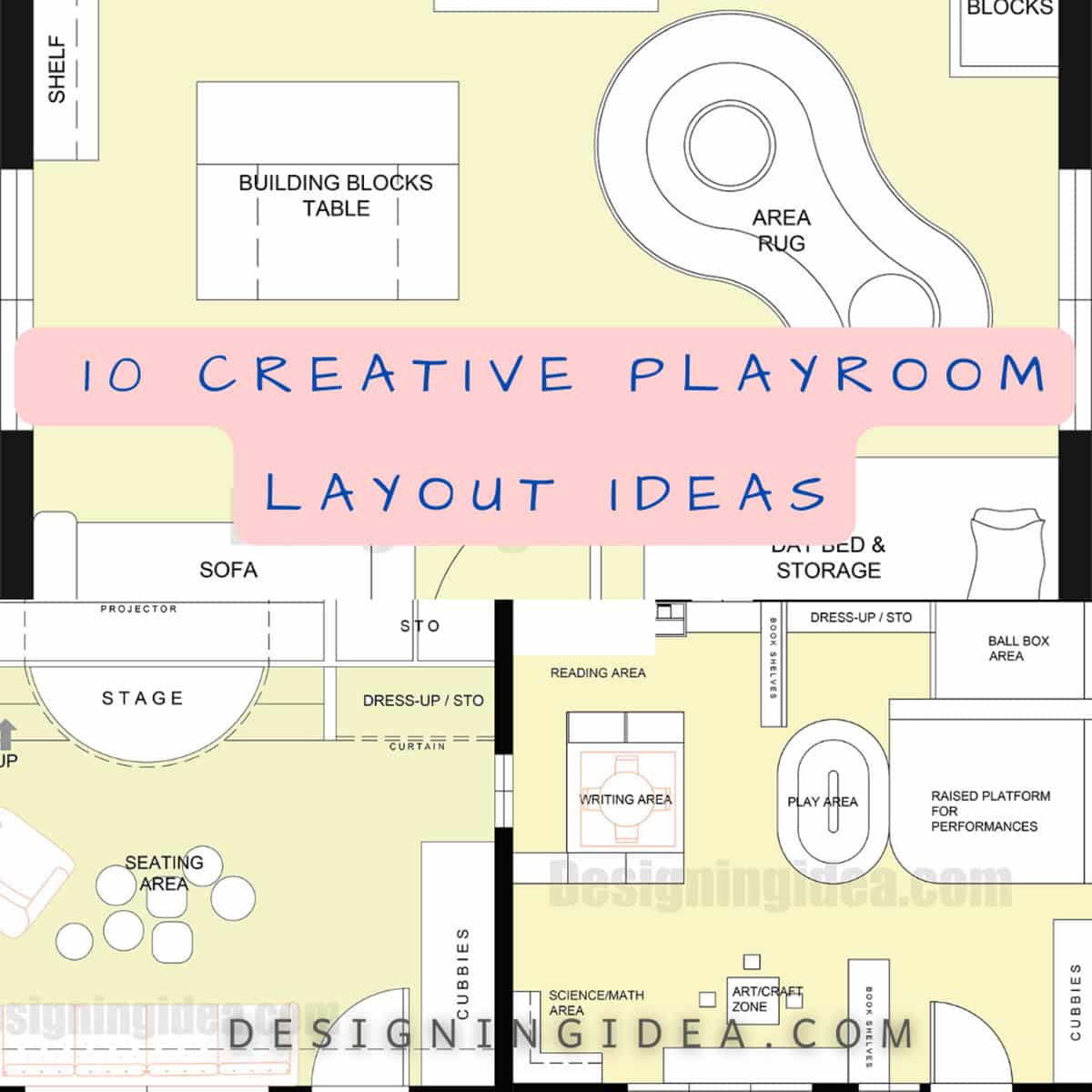
Kids’ spaces, whether at home or in a classroom setting, present learning opportunities for little ones. Therefore, should not be a missed opportunity to provide a well-thought space in their first critical steps in development. According to IRIS or the IDEA (Individuals with Disabilities Education Act) and Research for Inclusive Settings, a safe and functional kids’ creative playroom starts with a well-thought layout”. The following are 10 creative playroom layout ideas that you can get inspiration from when building or renovating your playroom space.
Zoned Layout Playroom
Compartmentalize functional areas according to different activities such as reading, arts, crafts,etc.
When a playroom has a layout where zones are created based on activities, it contributes to reduced safety risks and provides parents with better supervision. Moreover, items such as toys or craft materials are placed on specific areas to prevent clutter and reduce time in finding their needed tools or toys.
Also, it improves focus and concentration. Because a child is focused in one area and not needing to travel across the room to get an item, it reduces distraction from other children or activities.
Probably the most important advantage of zoned areas of activities for children is the introduction of compartmentalization or organizing. Setting boundaries teaches children to respect the boundaries of others and their activities.
Key Advantage: Monitor the interior playground at one glance.
Best for Large Playrooms. A rule of thumb is that a playroom is considered large if it has at least 250 square feet or 23.2 square meters of space.
Sample Layout:
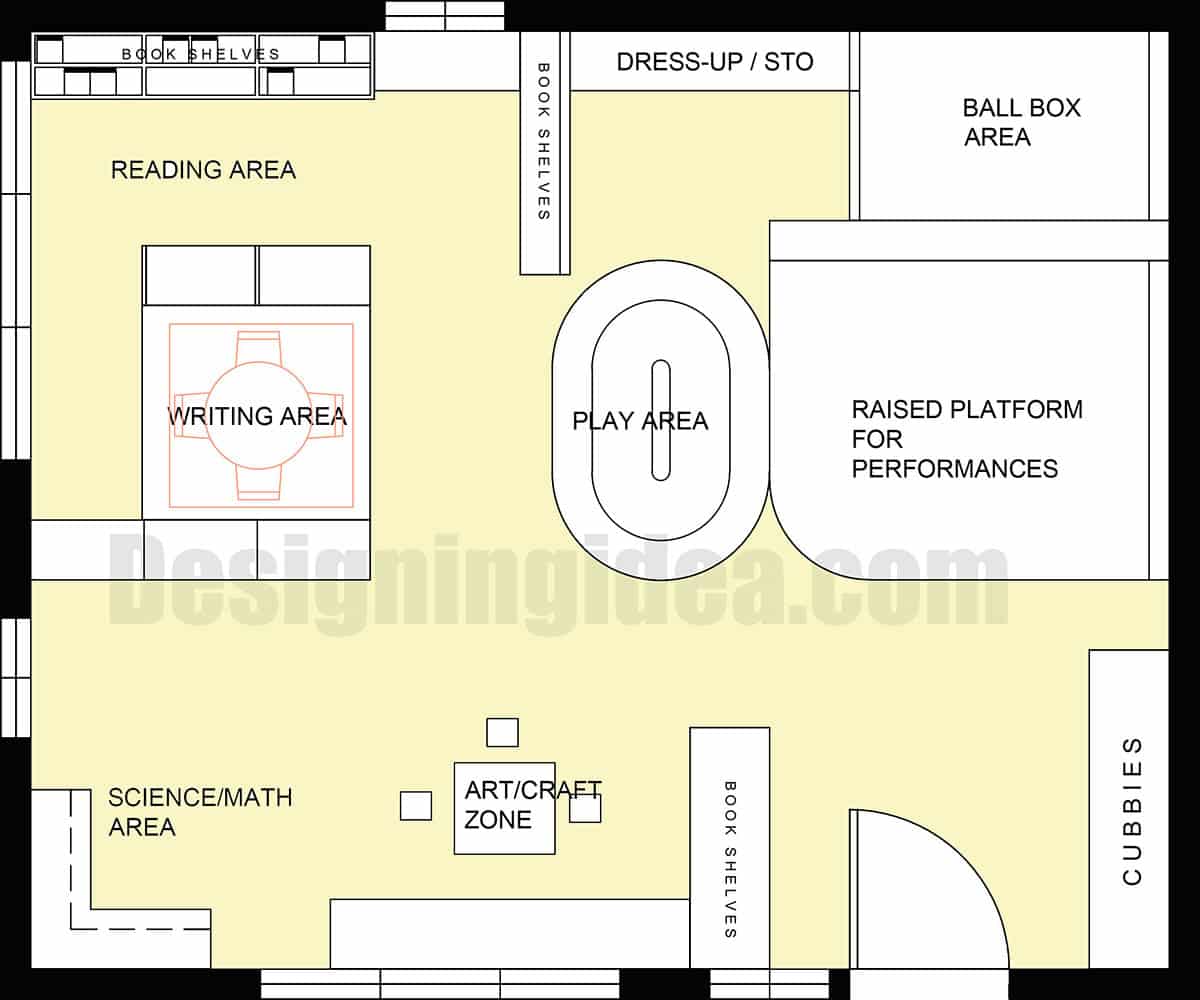
Near Entryway: Stage for performances and cubbies or shelves to place toys and other needed items in the playroom.
Center of the Room: A padded play area that can also be converted into audience seats since it is near your performance area.
Quiet Corner: Reading area surrounded by books beside it is a writing area.
Near Windows(Ventilation) – Arts/Crafts Zone and Science/Math Area for easier venting of fumes from materials used.
Other Design Ideas:
- Sensory Garden
- Sensory Path
- Water Play Zone
- San Play Zone
Open Floor Plan Playroom
Keep the center of the room open for flexibility and active play, with storage and activities along the walls.
The primary advantage of playrooms with open layout is flexibility. This is important when you have a small space since you eliminate walls or dividers. To mark and ground areas, area rugs, different paint colors, furniture or luminaires are used which is helpful for young children to acclimate their senses to the environment. Using multiple paint colors can help designate zones within the space, which is also helpful for learnign and imagination.
Key Advantage: Flexibility of the Space
Best for Small Playrooms with Multifunctional Purpose. Recommended square footage for open floor plan that allows the basic play area is 100 to 150 square feet or 9.3 to 13.9 square meters.
Sample Layout:
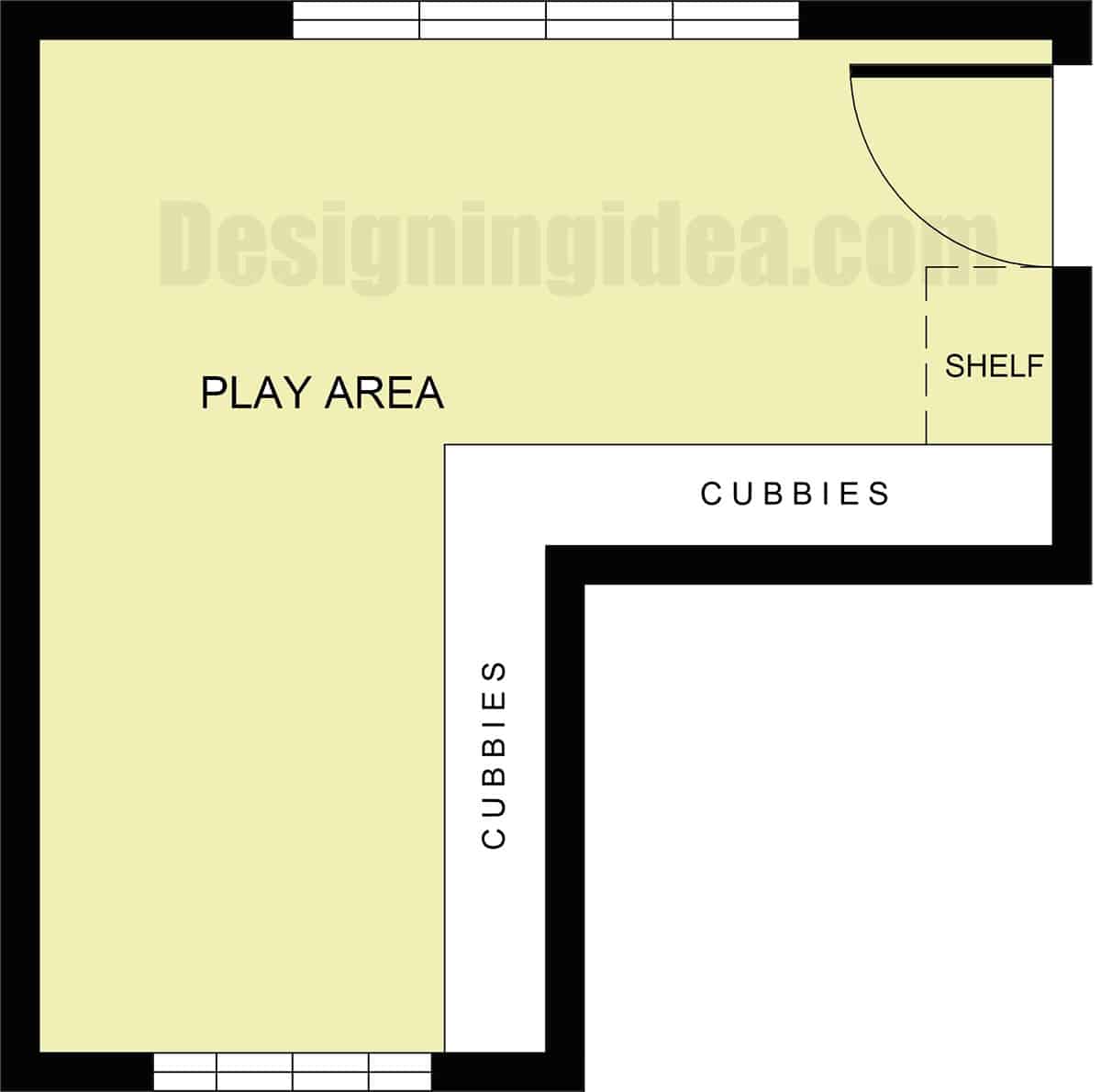
Shortest Side: Storage allocated at the shortest side to free up more space at the less compact area.
Play Area: Minimal to non-permanent furniture to provide flexibility within the space.
Toddler play area: 100-200 square feet
Toddler climbing area: 200-300 square feet
Toddler activity center: 300-400 square feet
For older children (ages 6-12):
Climbing structure: 400-600 square feet
Slide: 200-300 square feet
Swing set: 200-300 square feet
Sports court (basketball, volleyball): 1,000-2,000 square feet
Other Design Ideas:
- Add Bean Bags
- Climbing Structures
- Playhouse Like Tepee
Cozy Reading Nook Layout
Create a quiet corner with comfortable seating, bookshelves, and soft lighting.
Not all playrooms include a reading area but if you decide to dedicate a space for reading, entice young kids to read by locating it in a quiet part of the room that receives lots of natural light.
Another way to help young one’s focus is to create a comfortable seating that’s not facing an activity zone where a lot of movement occurs. You can place the cozy reading nook facing the bed or create a semi-private divider. Though take note that younger kids such as babies or toddlers will require full supervision and will not be safe in placing dividers even transparent glass.
Key Advantage: Quiet and relaxing space to read and can double as a study area.
Sample Layout:
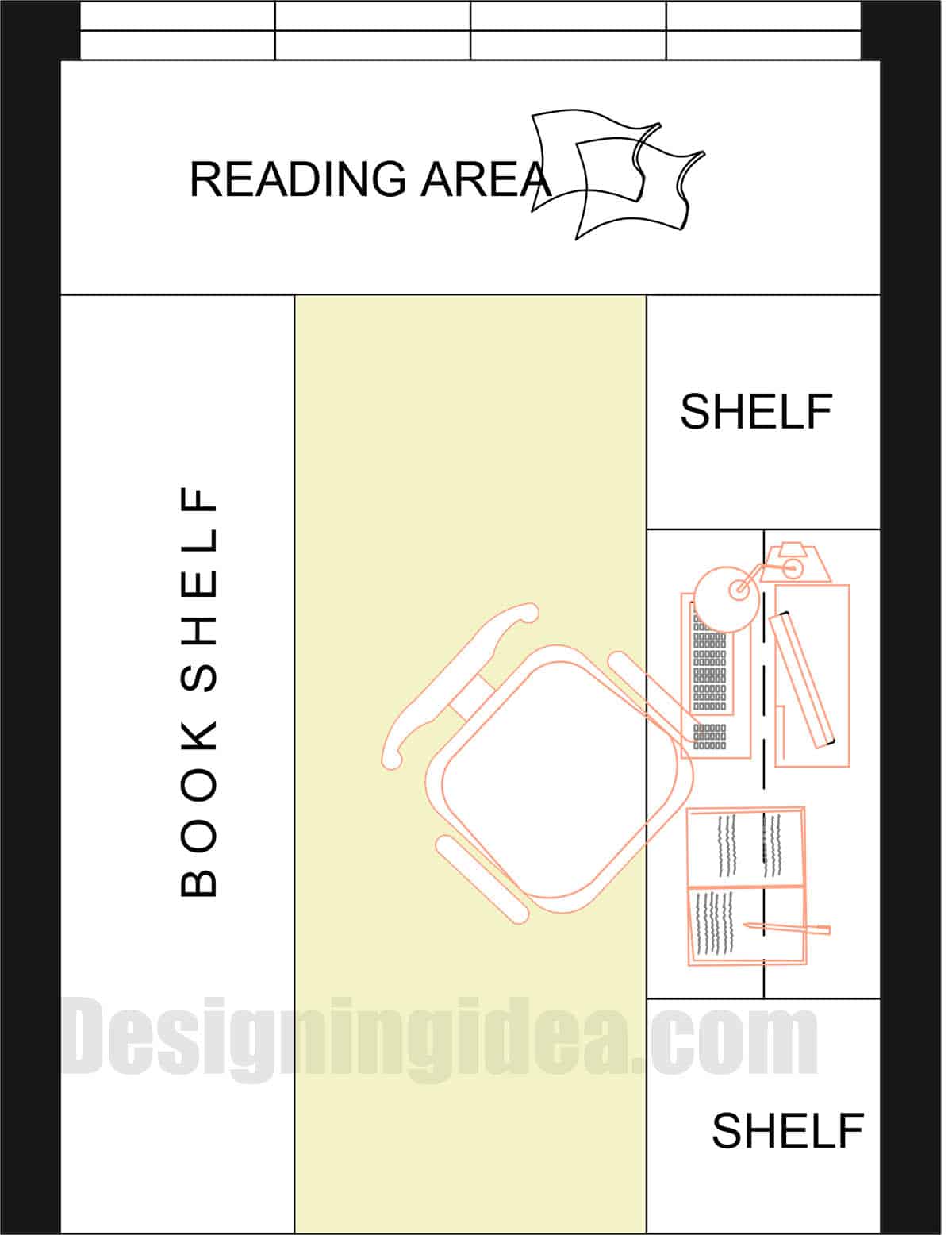
Near Window: Reading area placed near a windowsill around 44 inches in height.
Longer Side (Right): A desk is placed at the longer side flanked with shelves. The ample space provides enough option for writing, placing a computer or reading as well.
Longer Side (Left): Parallel to your right side are built-in shelves.
Center: A central aisle makes movement easier and utilizes space as the functional areas are moved against the walls.
Design Ideas:
- Closet Reading Area
- Integrated Lounge and Bookshelf
- Curved Bookshelves
- Themed Bookshelves
Indoor Playground Design
Incorporate playground elements like a slide, swing, climbing wall or monkey bars for active play.
The key for a working and efficient indoor playground is mainly having enough space for the intended user and planned activities. Safety and best arrangement and layout will easily follow along with a good ample playground space.
Key Advantage: In a controlled environment, children can play in different obstacles safely. This increases their activities improving their strength and coordination.
Sample Layout:

Far Left Corner: Ball box area or tent placed at the far left most corner just adjacent the padded area.
Far Right Corner: The wall climbing area is uninterrupted space where kids can focus on the activity without worrying other traffic from other activities.
Back Area: Monkey bars sandwiched between padded areas accessible at the center core of the plan.
Design Ideas:
- Pirate ship themed
- Space adventure theme
- Underwater adventure theme
- Garden theme
Kids Indoor Stage Area
Set up a small, raised platform with curtains for imaginative play and performances.
Boost your child’s confidence with a small theater stage. Even kids’ bedrooms can accommodate a small theater. A recommended space saving is for kids’ theater state that does not take much room is a corner small theater.
Key Advantage: It encourages creativity and confidence to young children. Invite family and friends to watch a play the kids can enjoy performing that also develops social skills and foster imagination.
Sample Layout:
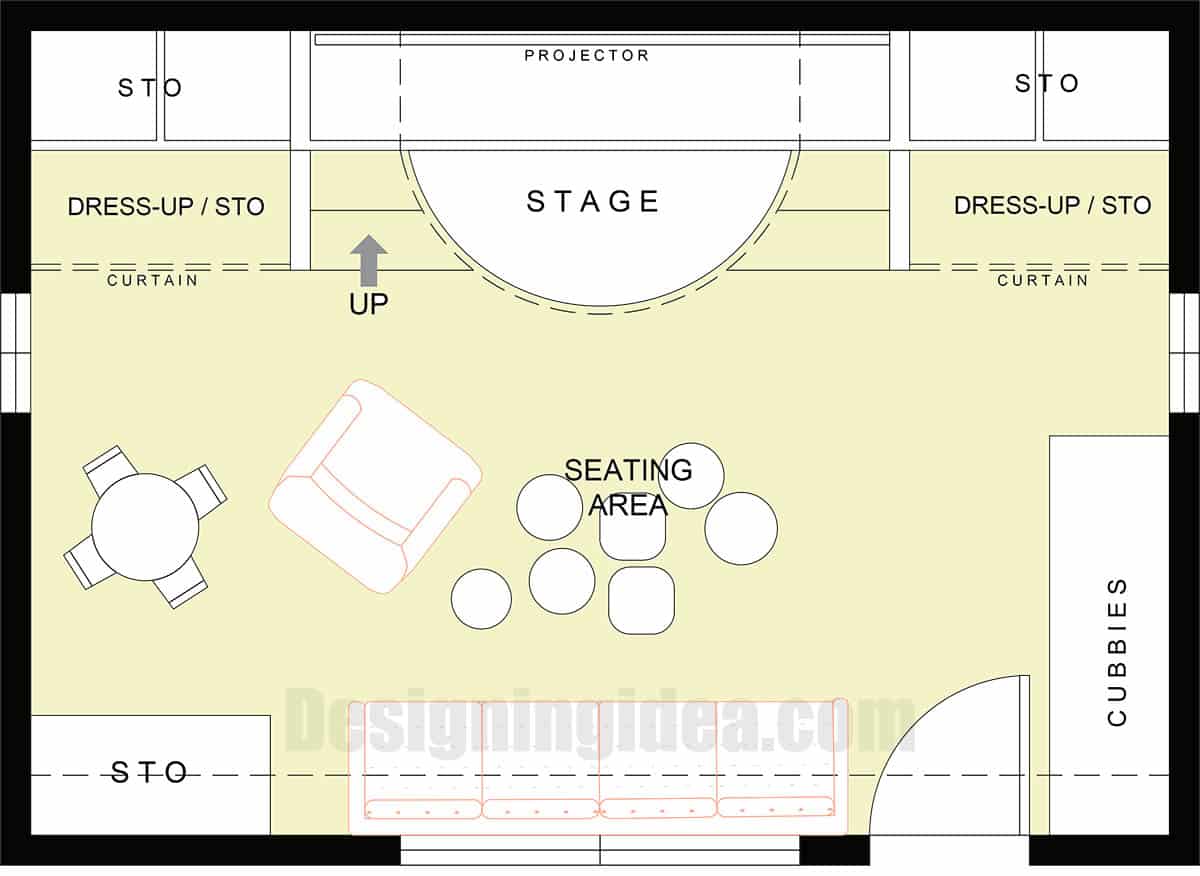
Far Back Center: Raised platform flanked by storage and dressing area. A projector is located at the backdrop of the stage to serve as a backdrop in the future and so the room can also serve as a media room when there are no performances.
Center: Flexible space for moveable seats. The platform can also be extended by attaching a raised platform to create a ramp.
Parallel to Stage: Against the wall is a long sofa lounge to serve as a semi-permanent seating for spectators.
Right of the Entry Door: The space is installed with built-in shelves to store toys and other items.
Crafting & Art Station
Dedicate a space with an easel, art supplies, and a washable floor covering for creative projects.
A crafting or art station nourishes creativity while keeping clutter in one area for easy disposal and organizing at the end of each activity. Kids will be able to safely express their art in this area with art tools and materials at arms reach saving time and minimizing distractions.
Key Advantage: A comfortable space to experiment on different materials freely and explore creativity.
Ideas:
- Dedicated Art Corner
- Island Art Station
- Wall- Mounted Art Station
- Mobile Art Station
Sample Layout:
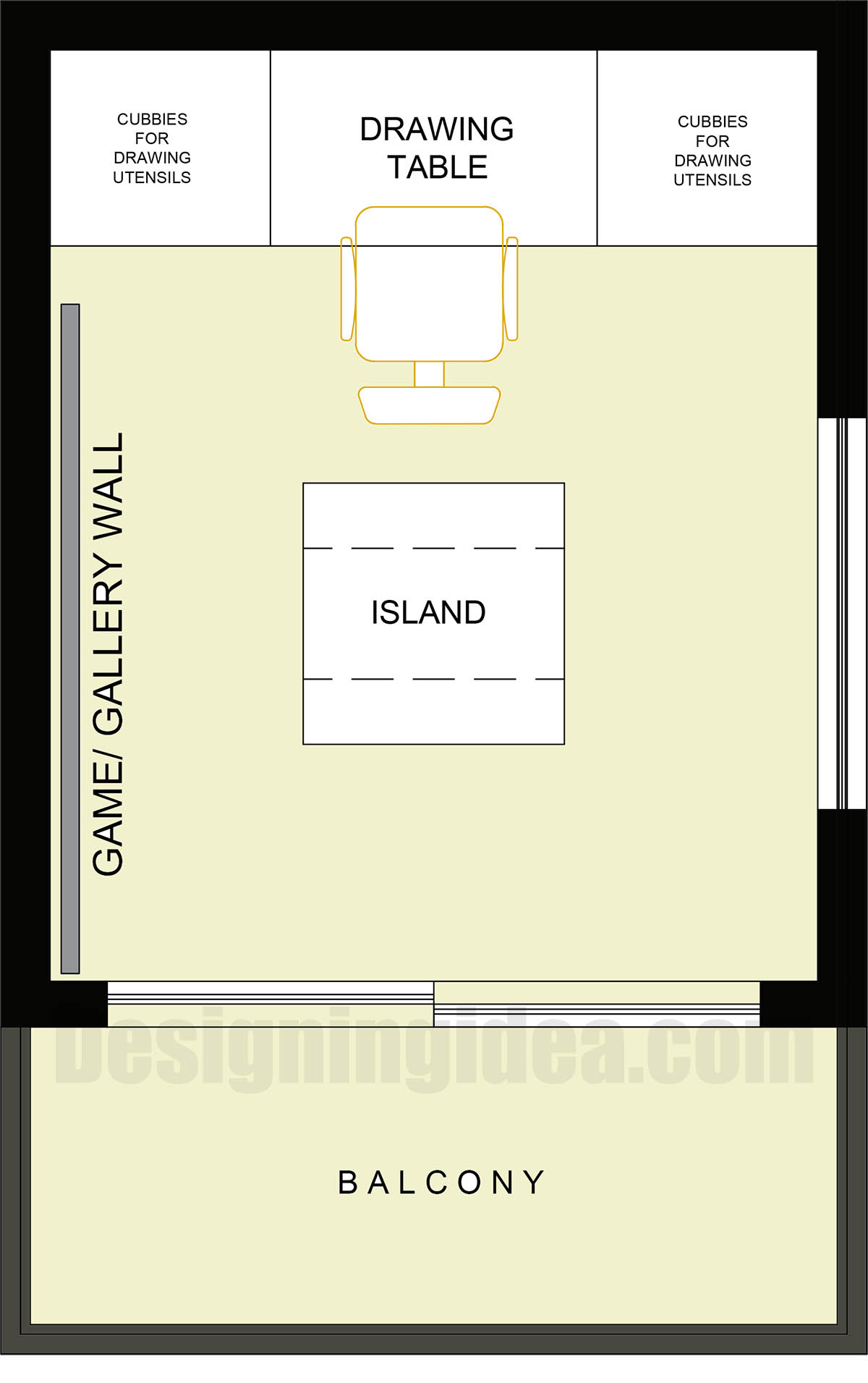
Back Wall – Built -in drawing table against the backwall as the focal point flanked with a variety of storage spaces to be used to store drawing materials.
Center of the Room – Mobile island table that can be attached to your main drawing table or moved around the room.
Balcony – A balcony provides an alternative drawing area during the day.
Design Ideas:
- Giant Cork Board Display
Building & Creativity Zone
Allocate an area with storage for blocks, LEGO, and other construction toys.
Develop spatial reasoning and develop understanding of geometry through adding a building zone. You can place construction toys such as LEGO or wooden blocks, or for the older kids snap circuits where are basically electronic building kits where kids can build simple electronic devices.
- LEGO bricks: These iconic toys offer endless possibilities for creating complex structures and understanding spatial relationships.
- Wooden blocks: Wooden blocks provide a tactile experience and can be used to build structures of varying complexity.
- Snap circuits: For older children, snap circuits offer a fun and engaging way to learn about electronics and develop spatial reasoning skills through building simple devices.
Key Advantage: Providing a space for building blocks such as lego, wooden blocks, or foam blocks keeps players safe as well as well organized.
Sample Layout:
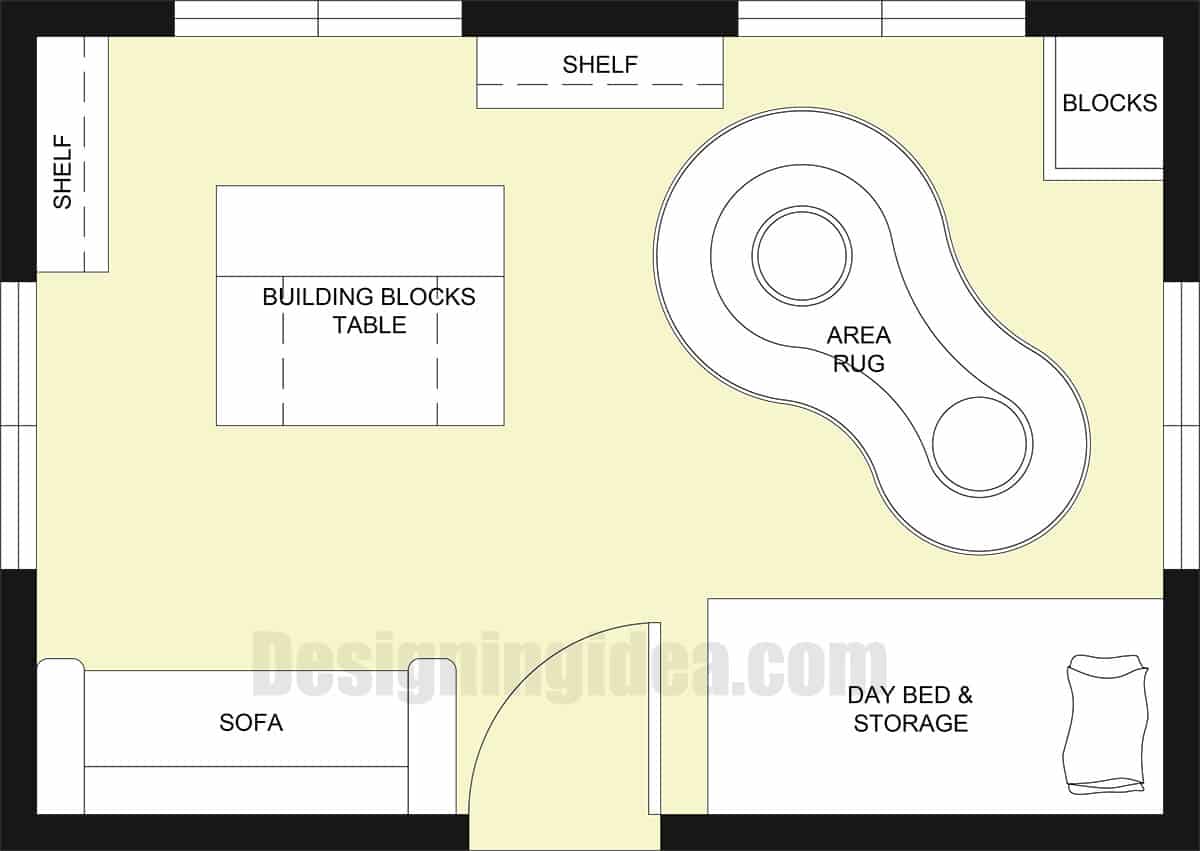
Against Wall Back Area: Storage compartment to store Lego and other building blocks.
Right Center: Placement of large area rugs or padded flooring where kids could assemble blocks.
Left Center: Position a building blocks table. The raised level makes it easier to reach even for older kids and adults.
Near Entryway Right Side: A convenient way to reach a daybed for kids for afternoon naps.
Near Entryway Left Side: A sofa lounge where adults can sit when watching kids or for kids to sit down during rest.
Design Ideas:
- Cityscape theme
- Fantasy Worlds
- Historical landmarks
Imaginative Play Playroom With L-shaped Layout
Smooth flow and transition of kids’ activities that utilizes the space.
Art corner, performance stage, construction zone encourages creativity and roleplay while providing ample storage and open space. The L-shape is utilized to create distinct areas that flow into each other.
A go-to layout for playrooms is the L-shape layout where it employs an open space at the center while the corner is utilized as an art station. Then, at one end a raised platform can be placed integrated with standalone cabinets or wire stands to hang props and dress up items. A mirror can be positioned along the wall or get a mobile mirror or a divider with integrated mirrors along the divider. The other end meanwhile of your L layout can be a construction zone or a pretend doll house or kitchen.
Key Advantage: Provide a safe space to conduct simple electronic assemblies to nurture their interest in science and engineering fields. A properly designed space dedicated for kids that need hand and eye coordination as well as precision and control.
Sample Layout:
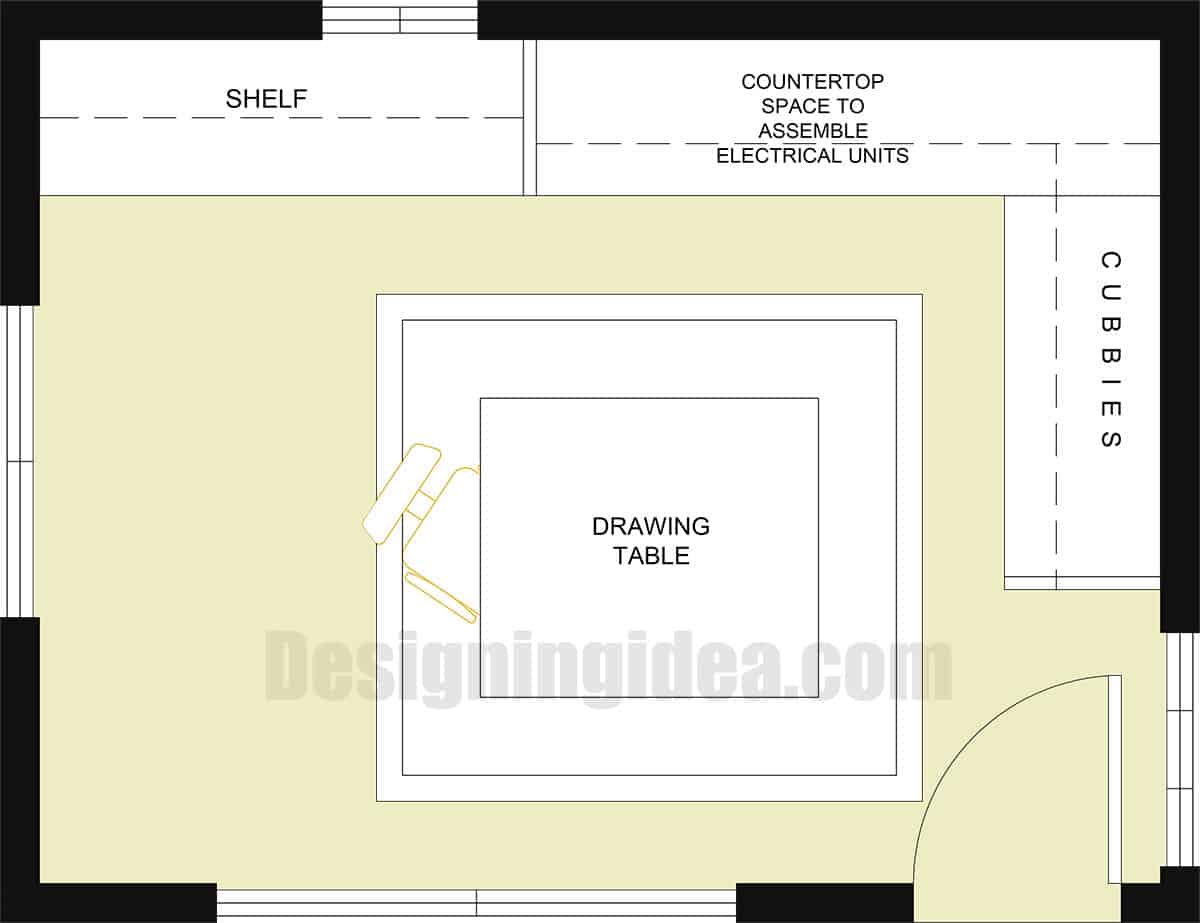
Corner – The L-shape counter provides a smooth flow of functional space combining the storage and work counter.
Center of the Room – A spacious drawing table to act as a secondary workspace for larger projects.
Design Ideas:
- Dress-up corner
- Puppet theater
- Toy Kitchen
- Pretend Doctor
Adventure Zone Layout
Needs large open space for adventure settings that encourages physical activities and sensory exploration for kids.
Creates distinct areas for different activities while maintaining an open feel. The storage wall keeps the room organized, and the decor elements add an exploratory, educational touch.
A fun and important type of playroom layout is incorporating adventure activities. These includes physical activities that explores the senses due to tactile surfaces and improves cognitive abilities. The adventure zone layout will need ample space to accommodate the features of the live environment. Escape rooms with physical interaction and puzzles with themes are popular for kids.
Key Advantage:
Provide adventure zones that are adjacent to each other. These zones promote physical activity.
Sample Layout:
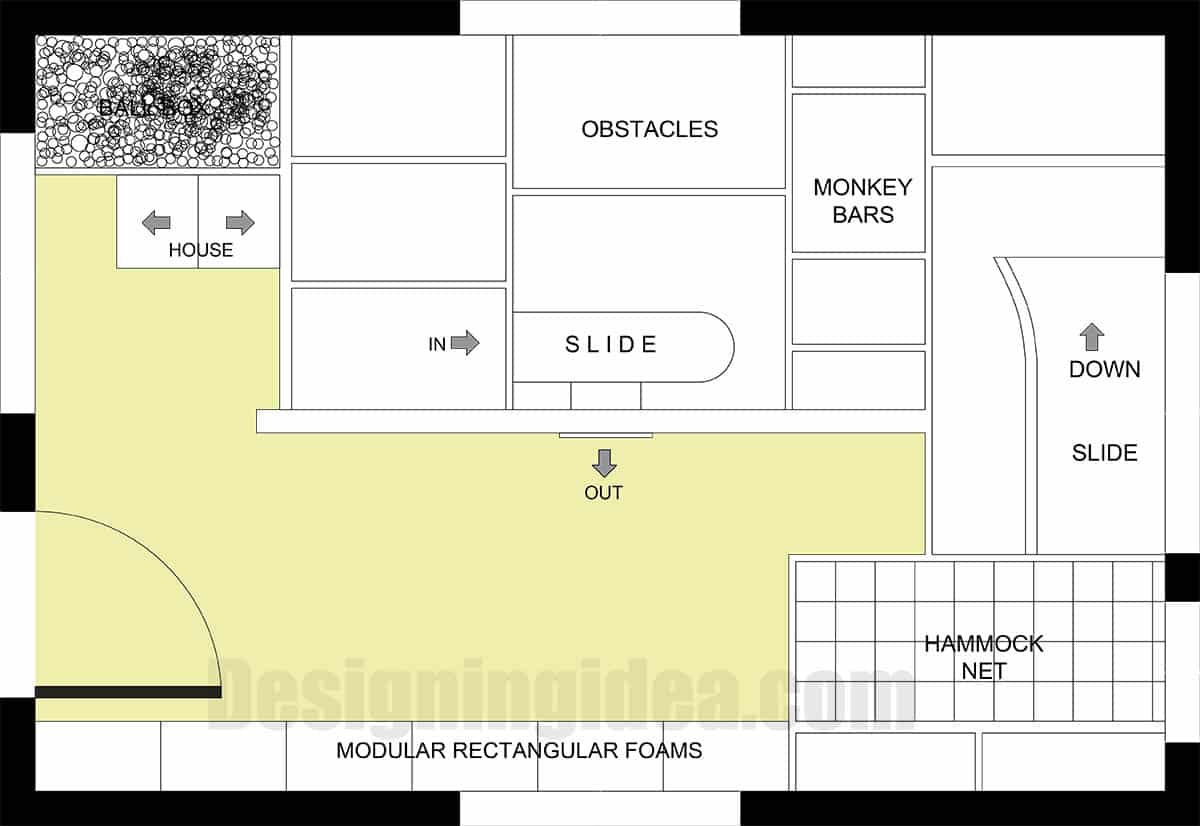
Right Side: Modular rectangular foams.
Left Side: Ball box area.
Rear Area: Variety of activity spaces against the wall following a counterclockwise direction.
Design Ideas:
- Create a central play structure such as a bridge, or monkey bars.
- Nature -based play such as tree house or sensory garden
- Physical movement such as gymnastic mats, balance beams and other obstacle courses.
Modular Furniture Playroom Design
Use movable furniture and storage units to easily reconfigure the space as needs change.
It is projected that playrooms specifically residential use are anticipated as temporary builds since children needs and wants evolves overtime and instantaneously.
Furniture such as modular couches that are sustainable and kid-friendly are popular options and can be reconfigured to create other types of kids’ furniture. These multi-functional furniture pieces often offer different configurations and often include storage options.
Key Advantage: Possible configurations that cover a wider range of age.
Sample Layout:
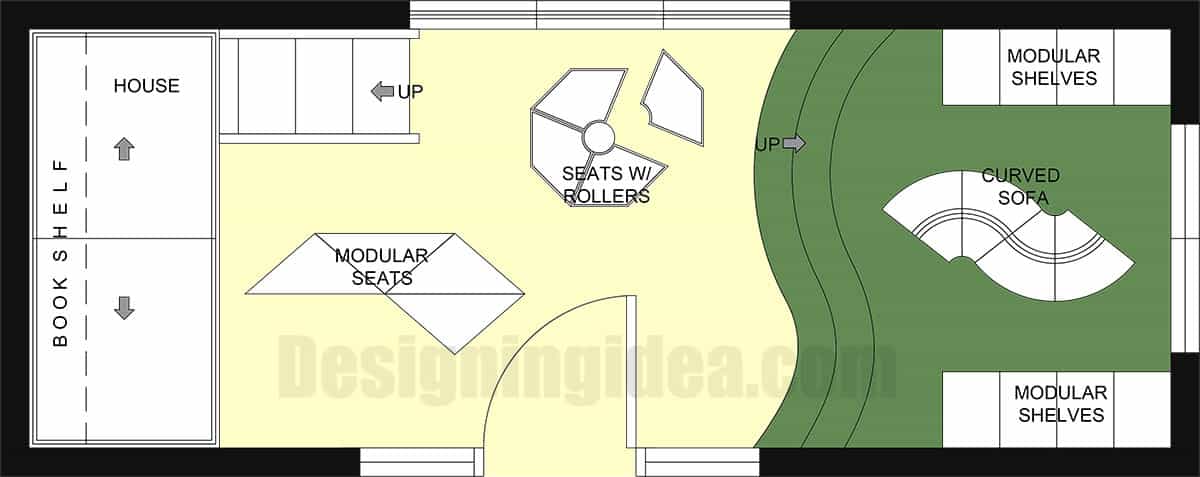
Right Side: Raised platform with modular shelves and seats for reading that can be easily reconfigured or expanded.
Left Side: Mini house with two levels. First level free space for desks, study or play area. Second level provides helves for books.
Center: Modular seats that are easily moved away for different activities.
Design Ideas:
- Modular rubber tiles
- Modular spring riders
- Modular seesaws
- Modular canopies
Modular furniture is frequently used in minimalist style playrooms for its contemporary look and multi-functionality.


